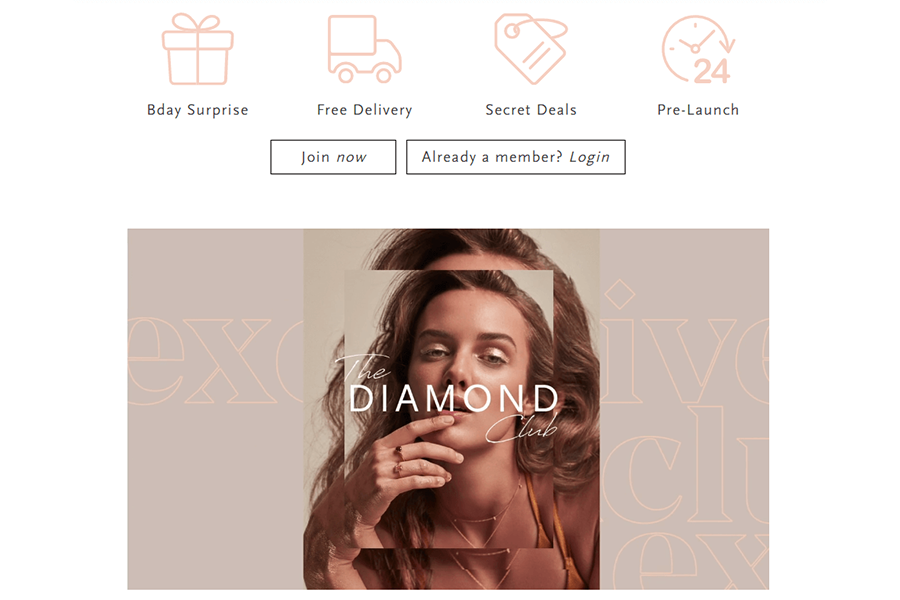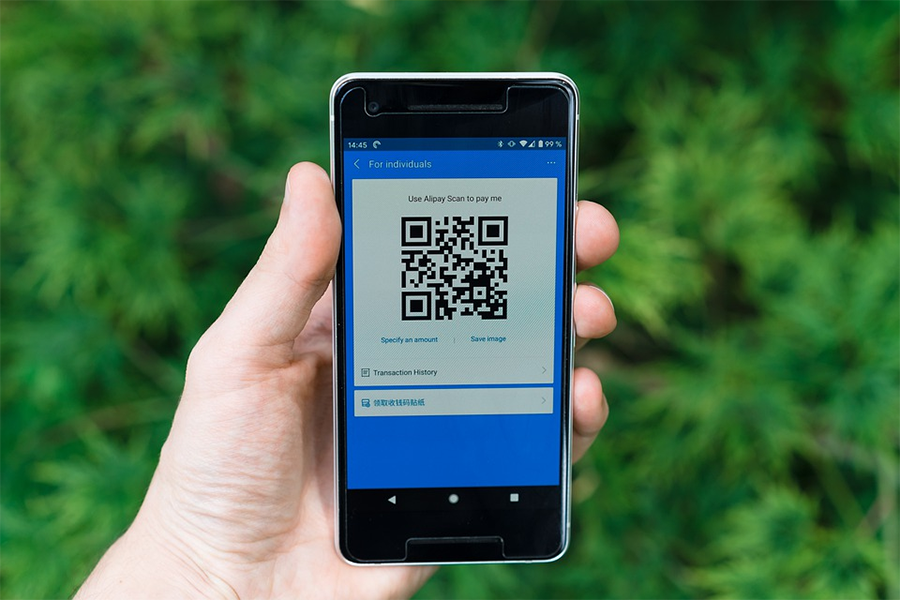What do you think keeps customers loyal to a particular brand? Of course, they enjoy the products or services, but that’s not all.
Customer loyalty programs go that extra mile to retain customers. That’s why 75 percent of customers continually patronize a brand after their first purchase. These programs help to improve customer engagement, sales, and revenue.
So what is a customer loyalty program? They are essentially a marketing strategy that rewards buyers for being loyal. They’re designed to incentivize repeat purchases with access to new products, special sales, or coupons.
And while these programs may differ, they are united by their aim to improve customer retention and nudge them to make repeat purchases.
This article discusses four effective customer loyalty programs to run for your small businesses.
Table of Contents
Why should you have customer loyalty programs?
How to make your loyalty programs unique?
5 effective customer loyalty programs for small businesses
Conclusion
Why should you have customer loyalty programs?

About 90 percent of companies have some kind of customer rewards program.
Leveraging a loyalty program for small businesses can target and attract your ideal customer. That’s why 64 percent of retailers agree that loyalty programs are the best way to connect with their customers.
The following points are reasons why businesses should have loyalty programs in their marketing strategy.
- Increases sales and revenue
The more your customers engage with your business, the more significant the impact on your business revenue. Retained customers will continuously bring profit to your business and boost sales and revenue.
- Improves customer engagement
Increasing the membership of your business loyalty programs also increases the exposure of your business content or emails. And by strengthening the bond between your customers and business, this impacts your business growth and sustainability.
- customer acquisition
Loyalty programs improve customer satisfaction, and this fosters advocates for your products or services. That is, satisfied customers are more likely to influence new customers by referring them to your business, leading to a broader customer base and increased customer retention.
So at the end of the day, integrating retail loyalty programs into your business can be a solid strategy for customer acquisition, retention and brand loyalty.
Let’s discuss how your company or business can keep customers invested in your programs.
How to make your loyalty programs unique?

Your business must have a high-value proposition to engage customers. This includes redeeming strong reward points that are valuable to your customers.
Consider these five ways to make your programs unique and attractive to customers:
Choose an attractive name
Use intriguing programs’ names to entice your customers’ curiosity and urge them to participate. Ensure that it clearly depicts the customer’s benefit and is creative enough to excite them. An example is Diamanati Per Tutti.

Because Diamanti Per Tutti sells jewelry, its Diamond Club loyalty program has a straightforward, memorable name that describes it as an exclusive group that is devoted to precious stones.
As you develop a name for your program, make it easy to remember as well as creative. Integrate straightforward terms like “Rewards”, “Circle” and “Club”, to make it memorable.
Make it fun
Once you leverage these programs to strengthen your customer base, it becomes easier to offer better experiences. Activities like gamification and personalizing products would also improve your customers’ retention.
This will ensure thatt customers look forward to the benefits you offer and will be more willing to invest their time and effort in exchange for your rewards.
Segment the user’s experience
Create unique experiences for your customers using their various data. Ideally, you’d be able to engage them over a more extended period once the program and rewards accurately fit into their customer persona.
Make your rewards and points valuable to members
Standalone points do not convey enough value. While the rewards offered may depend on the kind of program, they must be creative and valuable enough to solve customer challenges.
The best reward mix will include various points-based options without overwhelming program members.
For instance, Harry’s, an eCommerce shaving brand and salon, executed a referral program with incremental tangible rewards for referrers. Their reward tier was as follows;
- Refer 5 friends; Get a free shaving shave cream
- Refer 10 friends; Get a free razor.
- Refer 25 friends; Get a free premium razor
- Refer 50 friends; Get free shaving for a full year.
They also offered 10% off a first purchase to referrals to make the program valuable to all parties involved.
Like Harry’s, your upper tier rewards should include ambitious rewards to get customers revved for the top. So even if only a few members redeem them, other members can see the entire program as valuable.
Make it easy for customers to earn and redeem their rewards
Regardless of the customer loyalty program, customers must be able to cash out once they reach a required threshold. This will keep them satisfied and have no issues referring people to you.
Nevertheless, ensure all loyalty rewards are easy to earn to boost customer participation in other programs you may offer in the future.
5 effective loyalty programs for small businesses
Businesses can effectively retain customers with good loyalty programs. These well-chosen incentives give you an edge over competitors in your business niche. Here’s a list of customer loyalty programs to opt for:
1. Referral programs
Rather than monitoring surveys or writing reviews, you can leverage customer marketing to share brand experiences with partners and friends. This makes sense because 84 percent of customers claim to trust recommendations made by previous buyers before making purchases.
Not only does it maximize customer retention, but it also encourages customers to refer your business to others with ease. That’s why businesses like Revolut reported a 700 percent increase in customer acquisition through their referral program between 2018 and 2019 alone.
So, how do you develop a referral program?
Start by identifying your referral incentives: First, decide what would make an excellent incentive for old and new customers. Then, decide at what stage referees can unlock these perks and benefits.
This could be when they’ve referred a certain number of persons–and the higher the referrals, the greater the rewards.
Focus on offering customers value-based rewards: Companies with loyalty programs must learn to be exclusive and desist from offering off-the-park rewards. Instead, choose a structure that blends with your strategy. This may include personalizing referral codes, or increasing dividends as customers refer more people. Integrate other forms of referral marketing: Referral marketing strategies like affiliate marketing and traditional word-of-mouth marketing can boost customer acquisition, influencing sales.

For example, Chovm offers a refer and earn program where referrers can earn credits when their referral registers and posts a buying request on the platform.
2. Partner programs
Loyalty partnerships are similar to co-marketing relationships between two or more businesses.
However, this mutual agreement is only beneficial to your business when your partner’s brand service or product complements yours to bring excellent value to customers.
For instance, if you’re a department store retailer, with an increase in “new moms” demographic, you may consider partnerships with a baby formula brand, and a baby clothing brand to co-create value for buyers.
Why? It’ll increase the customer acquisition rate for this set of customers.
So, to make your partnership work, you can ask your partners to promote your store on their social channels to attract their audience to your store so they’re eligible for rewards. You can also offer similar rewards to existing customers.
Keep in mind that this is just one example. Loyalty partnerships can happen in different sectors or industries.
However, through marketing partnerships, both or more parties can combine and harness each business’s strong reputation and available resources, to co-create value, penetrate new markets, generate leads and increase sales.
To leverage formal partnerships as part of your loyalty programs, there must first be mutual benefit. Most times, your partners refer people from their network, and you give these partners a predetermined commission.
As a result, partner programs need an attractive revenue structure, partner admission strategy, and tiers to accommodate people who want to become partners.
For example, online-course selling platforms like Kajabi, reward official partners with a 30 percent lifetime commission for referrals that stay active past their free trial phase. Adopting this model makes it easy for the platform to handle loyalty management for its partners.
3. Discount loyalty programs
Discounts loyalty programs are most times part of a more defined customer loyalty program, rather than standalone — though, exceptions exist.
You can include discounts as rewards for referrals, paid memberships, affiliate or one-off birthday rewards.
Though, if you’re using loyalty discounts as part of a larger program, it’ll be helpful to do so using customer data to personalize the buying experience. To offer customers consistent and predictable discounts, identify associated members with a marker like their registered phone number, QR code, or a card.

And as you become familiar with your customer’s buying behavior and trends, you can improve their experience, resulting in even greater loyalty. Discount incentives like these give customers a reason to remain loyal.
4. Points-based loyalty program
Point-based loyalty programs focus on rewarding customers based on their actions. Regular customers earn points, cash back, or bonuses by carrying out specific actions.
Actions such as referring new customers, repeating purchases, and subscribing to business newsletters are ways to earn these points. Since these points are flexible, they accumulate and build customer loyalty by encouraging regular purchases.
5. VIP program
VIP programs offer exclusive, premium products or services to a few “worthy” customers who pay for them.
An example of a VIP program would be a paid loyalty program.
Paid loyalty programs are somewhat similar to a traditional loyalty program model. Members agree to pay a recurring membership fee upfront before they get benefits. Ideally, this payment gives customers immediate and ongoing benefits as they continue to make purchases from your business.
Chovm’s 88 VIP membership is an innovative tiered loyalty program that rewards its most loyal customers across its Taobao and Tmall subsidiaries.
Interested users with less than 1,000 points must pay an annual membership fee of 888 yuan — about $140 — to upgrade to the 88 VIP tier. Whereas, users with over 1,000 membership points pay 88 yuan, annually.
The 88VIP members enjoy free same-day deliveries, 5% off purchases, and coupons for several premium products and services.
Exclusivity aside, the 88VIP program successfully puts the customer’s buying experience at the center stage. This motivates new users to sign up or existing members to upgrade.
In fact, statistics show that 62 percent of customers would spend more on a brand after joining a paid loyalty program, making it one of the best loyalty programs you can invest in.
Conclusion
Building a customer loyalty program begins with prioritizing the customer experience. Although loyalty programs can’t solve all your customers’ problems, they’re simply a better way to thank customers for their loyalty and urge them to buy again.
You also want to make your online rewards program feel like a community. This gives people the chance to compete for prizes while sharing their experiences and positive stories related to your brand.
By leveraging all the eCommerce loyalty programs discussed in this article, you can increase your chances of winning over new customers, and retaining them.




